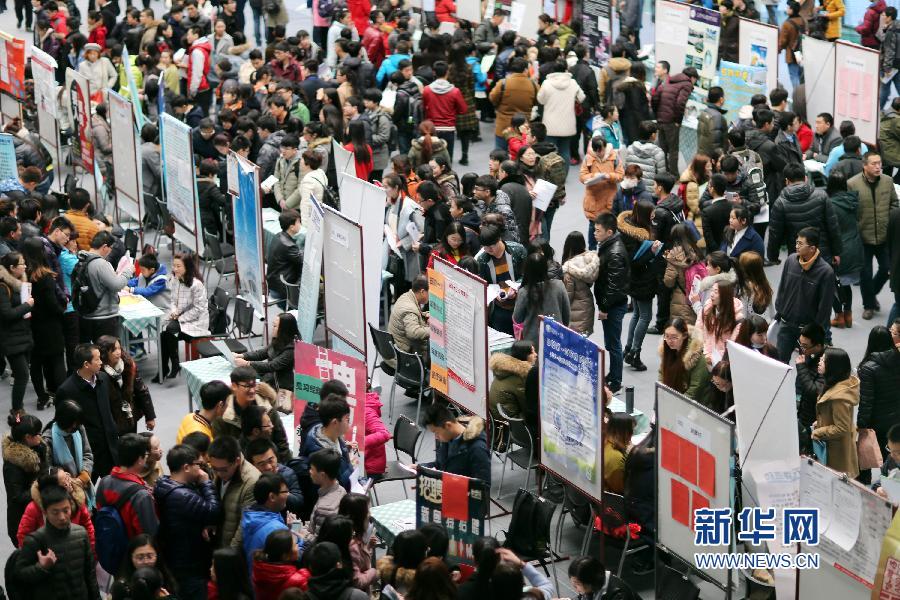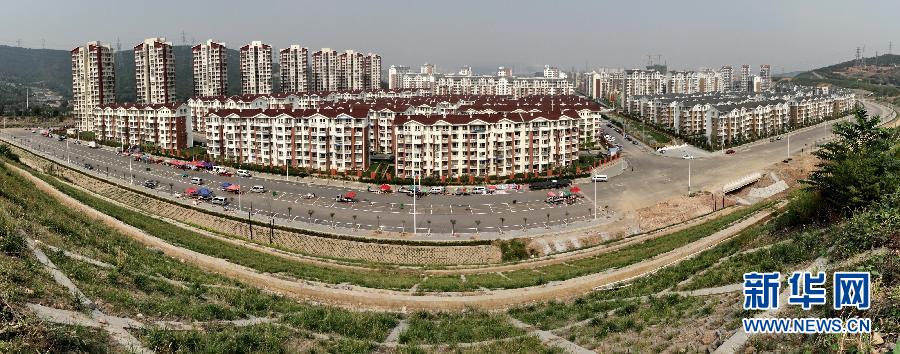

50 million
Objective: More than 50 million new jobs to be created in urban areas
According to the 13th Five-Year Plan, the roadmap for the nation's development from 2016 to 2020, more than 50 million new jobs will be created in urban areas—an increase of 5 million compared with the 12th Five-Year Plan.
Tertiary industries will be the main recipients of those new jobs. Zheng Dongliang, Director of the Work Science Research Institute, a research branch of the Ministry of Human Resources and Social Security, said that the plan would accelerate healthy and efficient development of the service sector.
According to Zheng, in five years, jobs in tertiary industries will account for more than half of all jobs.

The plan also features a proactive employment policy, more positions, and incentives for entrepreneurship. The plan calls for improving training programs and assisting impoverished families, migrant workers, disabled people and other vulnerable groups.
Zheng believes that, thanks to the plan, special groups will soon see more job opportunities. What’s more, better training will help to address the structural imbalance, he added.
55.75 million
Objective: By the end of 2020, the last 55.75 million impoverished rural citizens will be lifted out of poverty.

Lifting 55.75 million people out of poverty requires a sufficient supply of food, clothing, education, medical care and housing throughout rural areas.
According to the 13th Five-Year Plan, 152,000 kilometers of paved roads will be installed in impoverished regions, more than 90 percent of impoverished villages will be covered with broadband network, and coverage of the rural power grid will reach 99.8 percent. These measures will remove the remaining roadblocks for development.
China should no longer use the same poverty alleviation approach as before, said Wang Sangui, a scholar in the School of Agricultural Economics and Rural Development at Renmin University. Wang added that poverty alleviation measures must be based on the realities of impoverished regions and populations. Those measures may include relocation, productivity training, ecological compensation, social insurance policies and better education.
20 million
Objective: 20 million houses in shanty towns to be renovated in the next five years
In the past seven years, 26 million households have benefited from the renovation of shanty towns, and living conditions have been significantly improved.
The 13th Five-Year Plan dictates that more monetary compensation will be offered in areas with large real estate stock, so the supply of affordable houses will be increased, market inventory will be reduced, and citizens can have more options.

30,000
Objective: China's high-speed railways will extend to 30,000 kilometers by 2020, covering more than 80 percent of urban areas.
At the end of 2015, China had 19,000 kilometers of high-speed railway. According to the 13th Five-Year Plan, that number will increase by 60 percent to 30,000 kilometers by the end of 2020, covering more than 80 percent of major cities. The expanded high-speed railway network will link more cities, making domestic travel more convenient.
6.5%
Objective: China’s per capita disposable income will see an annual increase of at least 6.5 percent in the next five years.
Income is one of the most important indexes in the 13th Five-Year Plan. Experts estimate that with an annual increase of 6.5 percent, China’s per capita disposable income will come to 30,000 yuan ($4,600) by 2020, which means that the annual income of a three-member family of working adults will be around 90,000 yuan, catching up with upper-middle income countries.
Pan Jiancheng, Deputy Director of the China Economic Monitoring and Analysis Center (CEMAC) of the National Bureau of Statistics, said that the target is based on economic development and the appeals of the public. With improvements in productivity and reform of income distribution, it is an attainable goal, he added.
Over the same period, the income gap will be further narrowed. China will simultaneously raise labor remuneration and productivity so that incomes will increase and the gap will narrow. Pan added that income distribution will be more fair and efficient with the regulation of gray incomes, or illegal profits. Cracking down on abuse of power and administration monopolies will also help.
45%
Objective: the urbanization rate of permanent residents will reach 60 percent by 2020, and that of registered residents will reach 45 percent.
In the next five years, more migrant workers will be able to afford houses in urban areas and more children will be able to live with their migrant worker parents in cities. Those children will also be able to attend school in cities. Some will even be able to transfer their household registrations, and therefore enjoy the social welfare that their fellow citizens do.
Ye Xingqing, head of the Agricultural Economy Department of the Development Research Center under the State Council, said that the plan will accelerate the transfer of rural populations, reform the household registration system, and grant equal public services to rural people. There will also be incentives in place to help them integrate into urban life.
Ye added that the plan emphasizes people-oriented urbanization. For example, small and medium-sized cities are encouraged to provide migrant workers with more job opportunities.
85%
Objective: Mobile broadband to cover 85 percent of the total population by 2020
A faster and more affordable Internet connection will become a reality in the next five years, according to the 13th Five-Year Plan.
The plan will speed up construction of the 4G network, working toward the goal of full coverage in towns and administrative villages with dense populations. Free Wi-Fi will be available in public domains of cities and towns. Mobile broadband coverage will grow to 85 percent by 2020, up from 57 percent in 2015.
Wu Jianping, a professor of computer science at Tsinghua University, said that a better network will also help to promote innovation and entrepreneurship.
80%
Objective: 80 percent of days to feature "good” air quality by 2020
According to the 13th Five-Year Plan, China will take measures to tackle urban smog and deliver “good” air quality readings in prefecture-level and above cities for 80 percent of the year.
The plan demands strategies for smog control as well as strict implementation. Heavy pollution days in prefecture-level and above cities will be reduced by 25 percent. Heavy polluting enterprises in cities will be moved away or shut down.

Moreover, water, soil, dangerous waste and industrial pollution have all been named key agendas for environmental protection.
Li Zuojun, Vice-Director of the Research Institute for Resources and Environmental Policies under the Development Research Center of the State Council, said that pollution control, green construction, development of green industries and climate change were all taken into consideration as the plan was being drafted. With bluer skies and clearer water, a more beautiful China is on the way.
Day|Week

 96-Year-Old Veteran Becomes Fashion Icon
96-Year-Old Veteran Becomes Fashion Icon Creative mother produces 232 unique breakfasts
Creative mother produces 232 unique breakfasts Charming folk customs in Kalajun Grassland
Charming folk customs in Kalajun Grassland A glimpse of ships and boats commissioned to PLA Navy in past 3 years
A glimpse of ships and boats commissioned to PLA Navy in past 3 years Chongqing sniper’s new record: 13 holes on a rice grain
Chongqing sniper’s new record: 13 holes on a rice grain Women put on spring dresses in Hangzhou
Women put on spring dresses in Hangzhou UAVs at Unmanned Systems Exhibition & Conference in UAE
UAVs at Unmanned Systems Exhibition & Conference in UAE PLA's paratroopers conduct night training
PLA's paratroopers conduct night training Three new-type tank landing ships join the East China Sea Fleet
Three new-type tank landing ships join the East China Sea Fleet 3,492 reflector panels of China's mega telescope installed
3,492 reflector panels of China's mega telescope installed